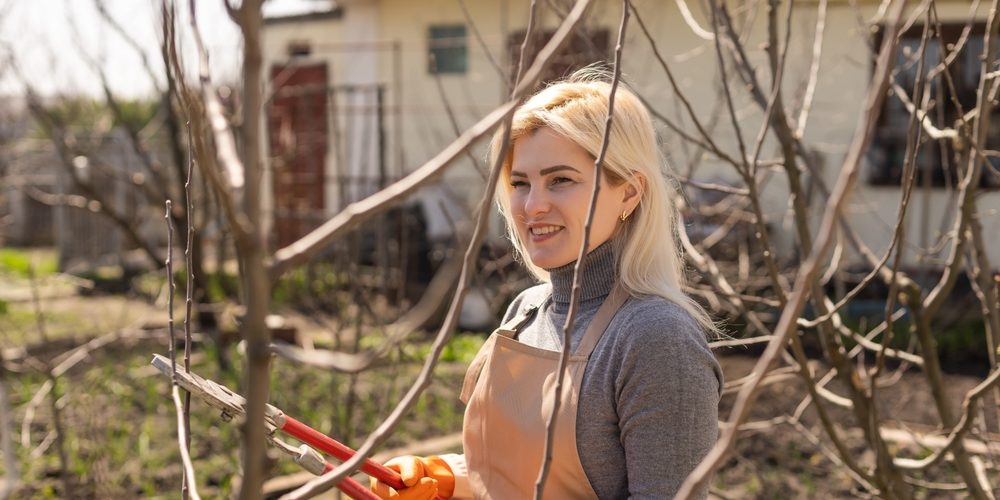The best time to trim or prune tree branches largely depends on the specific goals of pruning, the type of tree, and the tree’s health and location. General guidelines suggest late winter to early spring and late fall as optimal pruning times for many tree species.
Here’s a breakdown of considerations for pruning in spring versus fall…
Pruning in Late Winter to Early Spring
- Optimal Healing – Pruning just before the spring growth flush gives trees a chance to heal quickly from pruning cuts as their growth begins, minimizing the time wounds are exposed.
- Disease Management – For many trees, pruning during the late dormant season reduces the risk of spreading diseases that are more active and transmissible in warmer months.
- Visibility and Structure Assessment – Without leaves, the structure of the tree is easier to assess, making it simpler to make informed decisions about which branches to remove.
- Reduced Stress – Pruning before the spring growth spurt means the tree doesn’t waste energy on branches that will be removed, allowing for more efficient use of its resources for the remaining branches.
Pruning in Fall
- Generally Discouraged – Pruning in the fall is often discouraged because cuts heal slower as trees are entering dormancy, and fungi and other decay organisms are more likely to infect pruning wounds due to the moist and cool conditions.
- Risk of Encouraging New Growth – Pruning can stimulate new growth, which is undesirable in fall since young shoots may not have enough time to harden off before winter, making them susceptible to winter injury.
Exceptions and Considerations
- Type of Tree – Some trees, such as spring-blooming species, are best pruned right after they bloom in late spring or early summer to avoid cutting off next year’s buds. Summer can also be a good time to prune for corrective purposes, such as removing limbs that are dead, diseased, or pose a safety hazard.
- Disease Considerations – Certain diseases, such as oak wilt and Dutch elm disease, spread more readily during specific times of the year. For trees susceptible to these diseases, pruning during periods of low disease transmission (often in late fall or winter) is crucial.
- Regional Climate – The best time for pruning can also depend on your local climate and weather conditions. In colder climates, early spring or late winter pruning is ideal, while in warmer climates, timing may vary.
Best Practices
- Always use clean, sharp tools to make precise cuts, which help ensure quick and proper healing.
- Understand the specific needs of your tree species before pruning, as timing can vary widely between species.
- Consider consulting a certified arborist, especially for significant pruning tasks, to ensure the health of the tree and safety during the process.
While late winter to early spring is often ideal for pruning many types of trees, specific timing should consider the tree species, local climate, and health or safety concerns.






